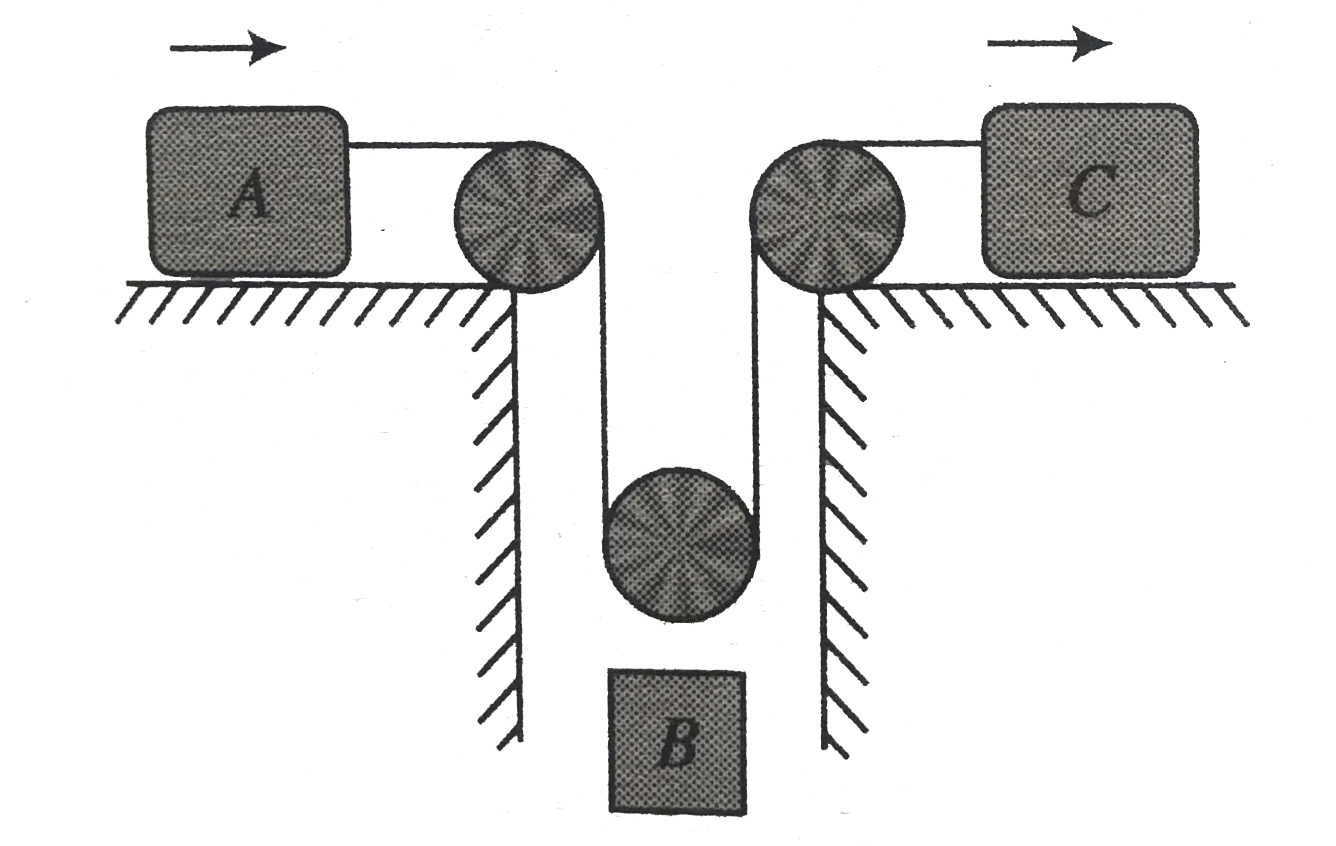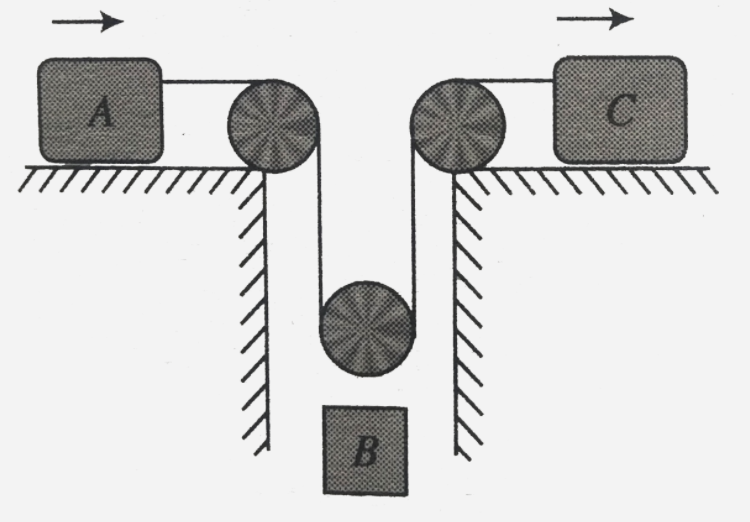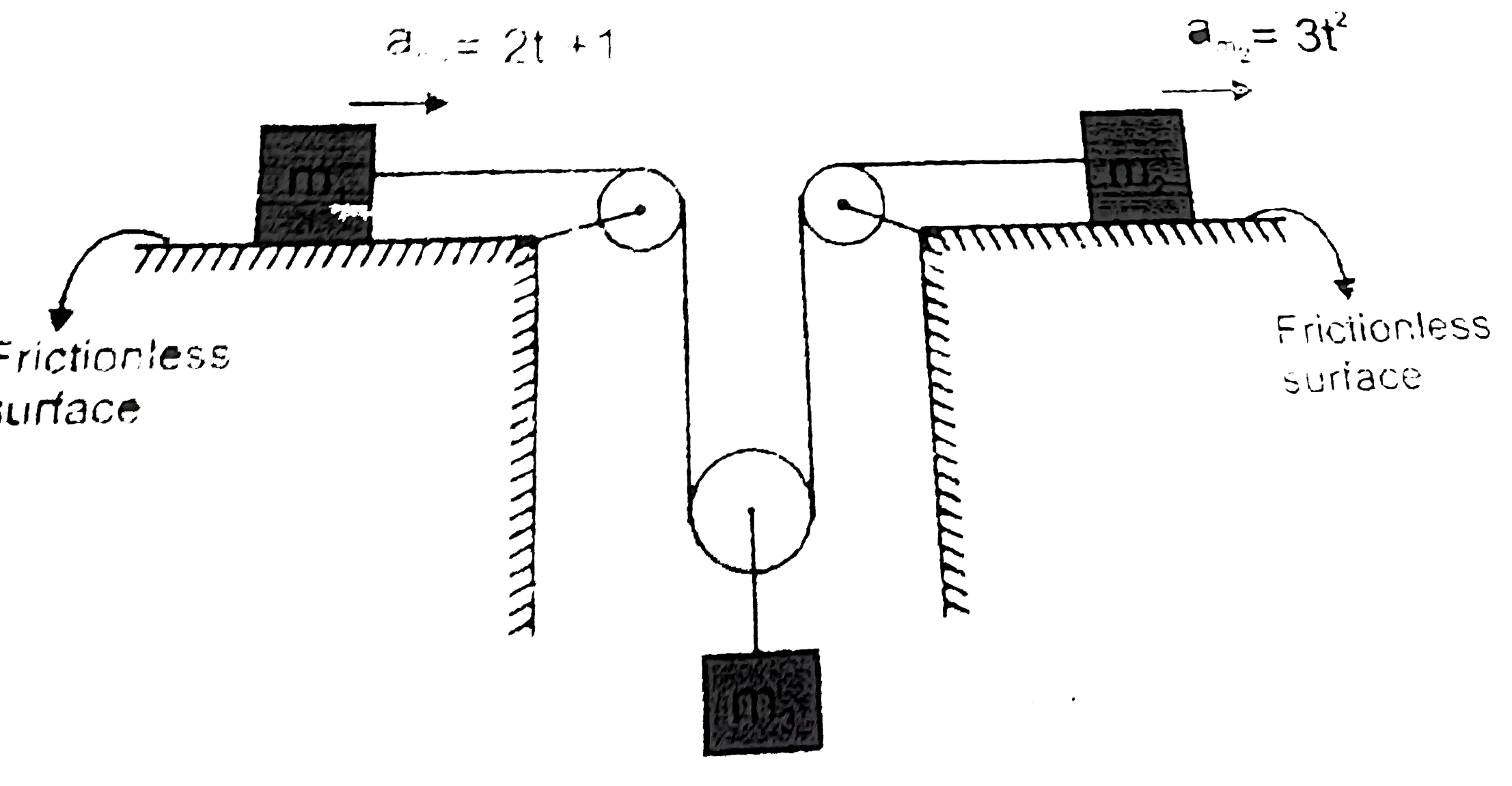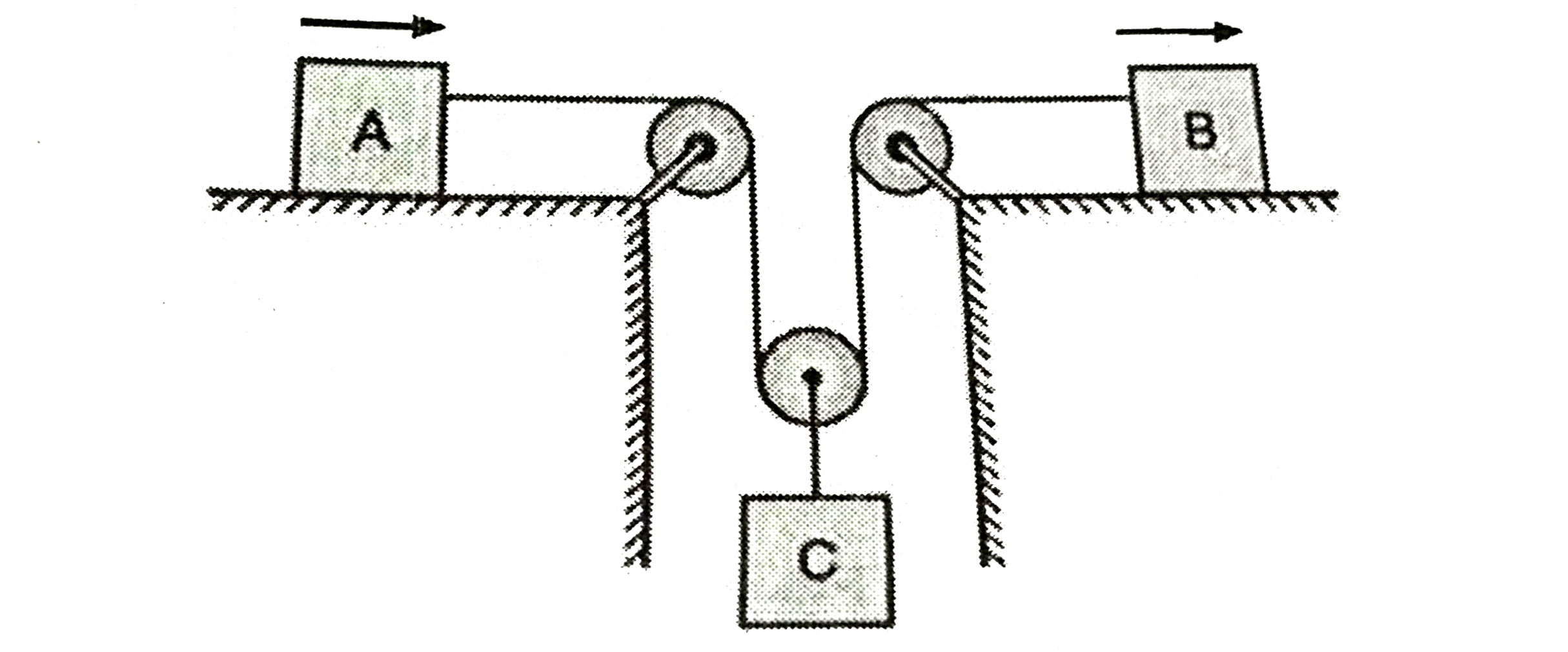Block A and C starts from rest and move to the right with acceleration aA=12tms−2 and aC=3ms−2. Here t is in second. The time when block B again comes to rest is

2s
1s
3/2s
1/2s
The correct Answer is:D
From constraint relation we can see that the acceleration of block B in upward direction is
aB=(aC+aA2) with proper signs
So, aB=(3−12t2)=1.5−6t
or dvBdt=1.5−6t or vB∫0dvB=1∫0(1.5−6t)dt
or vB=1.5t−3t2 or vB=0 at t=1/2s.
Topper's Solved these Questions
- NEWTON'S LAWS OF MOTION 1BOOK - CENGAGE PHYSICS ENGLISHCHAPTER - NEWTON'S LAWS OF MOTION 1EXERCISE - Multiple Correct
11 Videos
- NEWTON'S LAWS OF MOTION 1BOOK - CENGAGE PHYSICS ENGLISHCHAPTER - NEWTON'S LAWS OF MOTION 1EXERCISE - Assertion-reasoning
15 Videos
- NEWTON'S LAWS OF MOTION 1BOOK - CENGAGE PHYSICS ENGLISHCHAPTER - NEWTON'S LAWS OF MOTION 1EXERCISE - Subjective
15 Videos
- MISCELLANEOUS VOLUME 2BOOK - CENGAGE PHYSICS ENGLISHCHAPTER - MISCELLANEOUS VOLUME 2EXERCISE - INTEGER_TYPE
10 Videos
- NEWTON'S LAWS OF MOTION 2BOOK - CENGAGE PHYSICS ENGLISHCHAPTER - NEWTON'S LAWS OF MOTION 2EXERCISE - Integer type
1 Videos
Similar Questions
Blocks P and R starts from rest and moves to the right with acceleration ap=12tm/s2andaR=3m/s2. Here t is in seconds . The time when block Q again comes to rest is

View SolutionBlocks m1 and m2 starts from rest and move to right with accelerations as shown. If t is in second then the time when block m3 again come to rest from t=0 is (pulley and strings are ideal) :
 .
.
View Solution
Knowledge Check
Block A and C start from rest and move to the right with acceleration aA=12tm/s2 and aC=3m/s2 Here t is in seconds. The time when block B attain comes to rest is:
 A2sB1sC3/2sD1/2s
A2sB1sC3/2sD1/2sBlocks m1 and m2 starts from rest and move to right with accelerations as shown. If t is in second then the time when block m3 again come to rest from t=0 is (pulley and strings are ideal) :
 .A√52secB1+√52secC1+√32secD1sec
.A√52secB1+√52secC1+√32secD1secA particle starts from rest with a time varying acceleration a=(2t−4). Here t is in second and a in m/s2
The velocity time graph of the particle isAparabola passing through originBstraight line not passing through originCparabola not passing through originDstraight line passing through origin
A particle starts from rest with a time varying acceleration a=(2t−4). Here t is in second and a in m/s2
The velocity time graph of the particle is
View SolutionA car starts from rest and moves along the x-axis with constant acceleration 5ms−2 for 8 seconds. If it then continues with constant velocity, what distance will the car cover in 12 seconds since it started from the rest ?
View SolutionThe distance travelled by a particle starting from rest and moving with an acceleration 43ms−2, in the third second is.
View SolutionThe distance travelled by a particle starting from rest and moving with an acceleration 43ms−2, in the third second is.
View SolutionThe distance travelled by a particle starting from rest and moving with an acceleration 43ms−2, in the third second is.
View Solution
